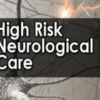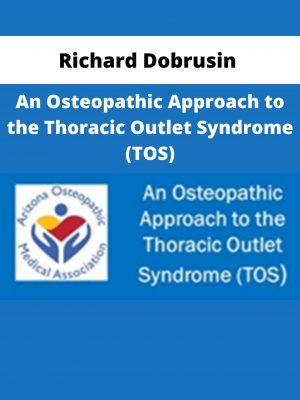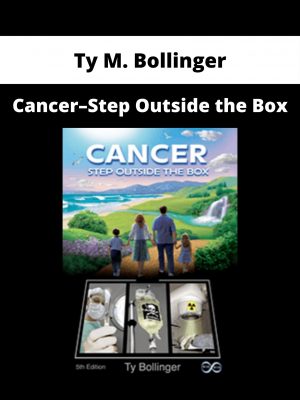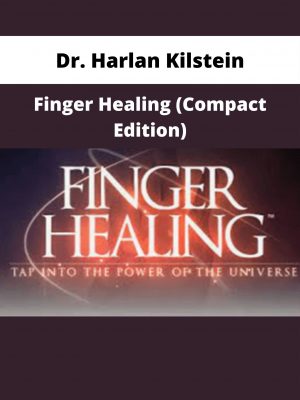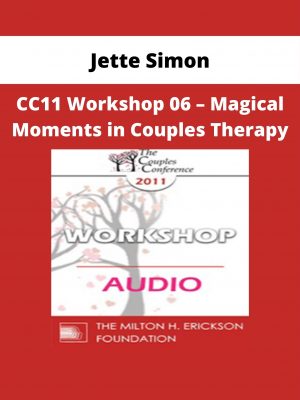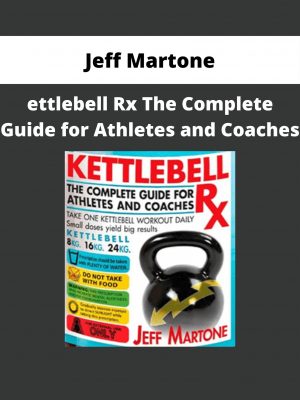Timothy Gordon – ACT for Children & Adolescents
$200 Original price was: $200.$75Current price is: $75.
Shopping Instructions:
- DISCOUNT 15% : SHOP15
- Product Delivery: Within 1 – 12 hours after purchase.
Tim will teach you the main concepts of ACT and how to empower kids how to live a more engaged life by navigating with acceptance, self-compassion and present moment skills including mindfulness.
Timothy Gordon – ACT for Children & Adolescents
- Strategies to manage emotions, achieve goals and build connections
- New techniques to reduce stress and suffering in younger populations
- Experiential exercises, case studies and video examples
You’ve heard that desperate cry for help from a parent or caregiver to – “fix my kid”.
Integrating Acceptance and Commitment Therapy (ACT) into your practice offers a new way for you to achieve positive therapeutic outcomes with difficult-to-treat younger clients. Get ready to use new tools that will change the “fix” agenda and embrace an approach of acceptance and build on children’s strengths.
Join experienced ACT trainer Tim Gordon, MSW, RSW, as he delivers an exercise and technique-heavy workshop that will give you the tools needed to more effectively treat kids with anger, anxiety, depression, eating disorders, trauma and family conflict.
Tim will teach you the main concepts of ACT and how to empower kids how to live a more engaged life by navigating with acceptance, self-compassion and present moment skills including mindfulness.
ACT for children and adolescents is not merely a new technique or set of methods, it’s a scientific approach enhancing practices that already work for many clinicians, breathing new life into case conceptualization and looking at our most stuck cases. Through case examples, video clips, and role-play you will be able to integrate ACT skills in your practice tomorrow!
- Describe the six processes that underlie psychological flexibility.
- Formulate common clinical problems in the treatment of children using a psychological flexibility model.
- Explain how the model of psychological flexibility can be organized in three major interventions that underlie most 3rd wave of cognitive behavioral therapies.
- Demonstrate the ability to formulate an ACT consistent therapeutic agreement and gain sufficient buy in from primary caregivers and other systems.
- Show how to use “creative hopelessness” to motivate a change in the control agenda including experiential activities aimed at bringing children into direct contact with letting go of their attempts to escape unwanted thoughts and feelings.
- Demonstrate at least three skills or methods to increase ‘awareness’ in child client populations and related buy-in from primary caregivers.
- Demonstrate at least three skills or methods to increase ‘engagement’ in child client populations and related buy-in from primary caregivers.
- Distinguish between goals and values as specified in ACT and how to use primary caregivers values for buy-in.
Would you like to receive Timothy Gordon – ACT for Children & Adolescents ?
ACT in a Nutshell
- The role of values: mindfulness, acceptance, commitment, behavior
- Experiential avoidance
- Psychological flexibility
- ACT for children & adolescents
- The hexagon model
Role of Exposure in ACT
- Translate client values into behavioral goals
- Barriers to behavioral goals: external and internal avoidance
- External exposure
- Situations
- People
- Internal exposure
- Thoughts
- Emotions
- Memories
- Bodily sensations
- Psychological flexibility in young people
- Games and activities
Assess and Track
- Assess the function of behavior in young people
- Three categories of behavior: open-aware-engaged
- Create a therapeutic contract, agenda and agreement
ACT in Action – Strategies, Games, Activities and Experiential Exercises for Children & Adolescents:
- Anxiety
- Trauma
- Attachment issues
- Body dysmorphic disorder
- Bullying
- Family conflict
Group Settings & Schools
- Use ACT in groups with children and adolescents
- ACT in schools and non-clinical settings
Related products
HEALTH & MEDICAL
HEALTH & MEDICAL
HEALTH & MEDICAL
HEALTH & MEDICAL
HEALTH & MEDICAL
HEALTH & MEDICAL
CC11 Workshop 06 – Magical Moments in Couples Therapy – Jette Simon

